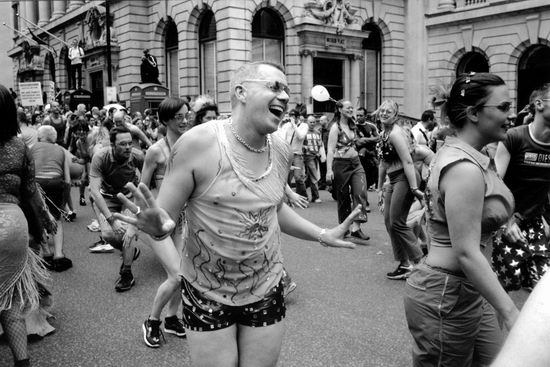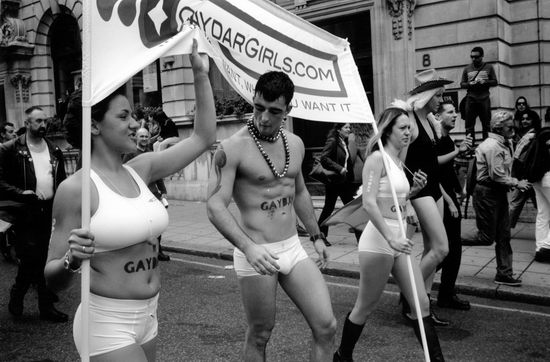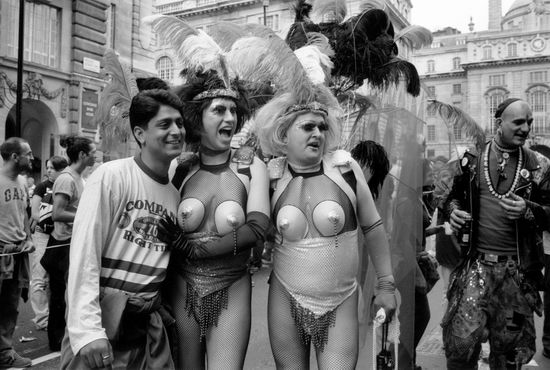Pride in 2002: Back in 2002 Pride was still in black and white, or at least the pictures I posted on My London Diary were, as were those I took to the picture library I was then working with. They still only worked with black and white prints and colour transparencies and I was working with colour negative.

It would have been possible for me to convert those colour negatives into transparencies, but it wasn’t worth the time and expense in the hope of possible sales to do so.

For my personal use and to exhibit work I could make colour prints – and I had crammed a colour processor into my darkroom so could feed the exposed Fuji paper in at one end, shut the lid and let the machine do the rest before I took the print to the print washer.

I had a smart colour enlarger with a linked probe that at least almost got the necessary filtration somewhere close, though I always ran at least one test strip – and often 2 or 3 – before making the final print. Making prints was a rather tedious business working in near total darkness with just a very, very dim sodium light.

The way forward was obviously to scan negative film to provide digital files, but in 2002 the equipment I had was fairly primitive and the scans I produced in 2002 looked rather poor, which is probably why I only posted the black and white images on My London Diary at the time. Scanning the black and white 10×8″ press prints gave rather better results.

Back then I only wrote two short paragraphs about the event in My London Diary – and here they are in full (with the usual corrections):
July started for me with the annual Pride march. This year it was probably the smallest I’ve attended, and was a rather sad event compared to previous years.
It was enlivened a little by some visitors from Brazil, but the whole thing seems to be more of a commercial event now. Much less fun and joy.

For this post I’ve revisited some of those 2002 scans and improved them significantly with the aid of some smart sharpening and other minor adjustments to post here. You can click on these colour images to see them larger.

Most of the colour images are of the same subjects as I took in black and white, and at least for some I still prefer them in black and white. But generally I think the event is best seen in colour.

More black and white pictures start here on My London Diary.
Flickr – Facebook – My London Diary – Hull Photos – Lea Valley – Paris
London’s Industrial Heritage – London Photos
All photographs on this page are copyright © Peter Marshall.
Contact me to buy prints or licence to reproduce.






